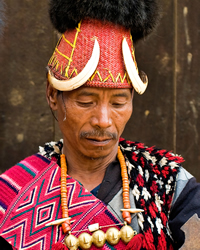Naga, Chen-Kayu in Myanmar (Burma)

Photo Source:
Copyrighted © 2025
Asia Harvest-Operation Myanmar All rights reserved. Used with permission |
Send Joshua Project a map of this people group.
|
| People Name: | Naga, Chen-Kayu |
| Country: | Myanmar (Burma) |
| 10/40 Window: | Yes |
| Population: | 10,000 |
| World Population: | 10,000 |
| Primary Language: | Naga, Chen-Kayu |
| Primary Religion: | Christianity |
| Christian Adherents: | 95.00 % |
| Evangelicals: | 55.00 % |
| Scripture: | Translation Started |
| Ministry Resources: | No |
| Jesus Film: | No |
| Audio Recordings: | No |
| People Cluster: | South Asia Tribal - Naga |
| Affinity Bloc: | South Asian Peoples |
| Progress Level: |
|
Identity
The name of this group is a composite of two closely related tribes: the Chen and Kayu. Although there are slight differences in culture and dialect between the two groups and they claim to have different origins, Chen and Kayu people today relate well together and freely intermarry. Some sources in India claim the Chen sub-tribe are a mixture of Konyak and Phom Naga people. Overall, approximately 200 tribes of Naga and Tangshang people occupy the Naga Hills and a large tract of territory across several states of northeast India and Myanmar.
Location: The 10,000 Chen-Kayu Naga people inhabit 13 villages on the Myanmar side of the border with India. Most villages are located in the Khamti District, with others spilling over into Lahe Township in the Naga Self-Administered Zone, which is situated within the densely forested Sagaing Region.
Language: The Chen-Kayu language is part of the Tibeto-Burman family, but it differs from most Naga languages in that it is related to varieties of Northern Chin, suggesting historical links between the two ethnicities. The Kayu dialect is reportedly like the Chuyo and Gakat dialects of Tangshang. Although the Chen-Kayu language is used vigorously by all members of this tribe, many now can also speak Burmese.
History
Born to fight, the Chen-Kayu Nagas have waged war against every outside force during their history, including the British imperialists and the Japanese during the Second World War. Because of their strategic location along the volatile India-Myanmar border, the Burmese authorities have been active in the area since the 1960s. As a result, “The cruel treatment by the military that appointed itself as the safeguard of Burmese Buddhism became clear from the decades of exploitation of Naga people as the free labor for many army projects. There have been many reported cases of rape and torture.”
Customs
Chen-Kayu Naga men are renown as great warriors and hunters. Until recently, men who killed an enemy were given facial and chest tattoos, while women received tattoos on their lower legs. After headhunting was outlawed, warriors collected monkey skulls instead of human heads. Those with dozens of trophies were considered the bravest men in the community, while young men who participated in a successful raid were considered the most eligible bachelors.
Religion
Apart from a small number of families who have doggedly held on to the animistic practices of their forefathers, almost all Chen-Kayu Naga people are professing Christians today. The first believers accepted Christ in 1973 after being visited by Konyak Naga missionaries from India. The faith has not been smooth-sailing for these believers, however, many of whom endured constant persecution at the hands of the Burmese military. In 2009, government soldiers tortured six people in Lahe Township for converting from animism to Christ, with two of them dying from the savage ordeal.
Christianity
The large majority of this former headhunting tribe remain Christians, with at least one church fellowship in each of their 13 villages. Konyak Bible teachers continue to lead many Chen-Kayu Naga churches. Because no Scripture has ever been translated into Chen-Kayu Naga, when a Konyak Naga Bible and hymnbook were published in India in 1992 they were given to the Chen-Kayu Christians to use in Myanmar. Although they are still used today, “most pastors from the Chen-Kayu group say it is difficult for their congregations to understand God's Word, as Konyak is not our heart language. The only time Konyak is used in church is when a Konyak preacher is sharing. The Bible is now mostly used by church leaders, but the common people need their own translation of the Scriptures.”